NATIVE BEES AT PALUMA
I am not a beekeeper as such, but I do like to think I am ‘keeping’ plants for the bees. Now that I am a keen gardener (Paluma does that to you!) I read lots of books and magazines on how to improve my gardening skills. ‘Keep the good bugs’ has been the consensus of many authors. In his book, The Bee Friendly Garden, Doug Purdie says “Bees are our most important pollinators and they are in decline the world over…….conventional gardens that favour lawns and pesticides over flowers and edible plants are scaring the good bugs away”.
With that in mind, I often wander around my garden to see who is visiting. I sometimes take my camera to see if I can catch the action.
The Teddy Bear Bee is one of my favourite native bees. This bee can grow up to 15 mm long and makes its nest at the end of a burrow up to 10 cm long in creek beds or garden rubble. This one was enjoying itself on my Melastoma affine (blue-tongue shrub) and the flowering salvias in my back garden.
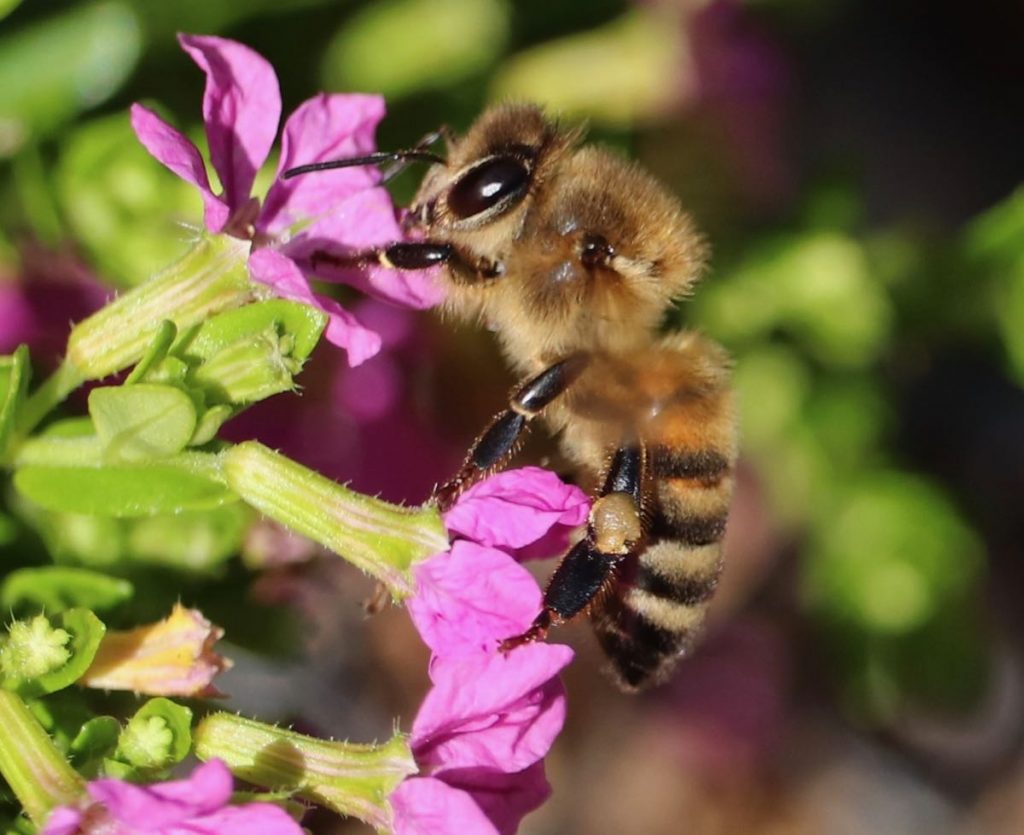
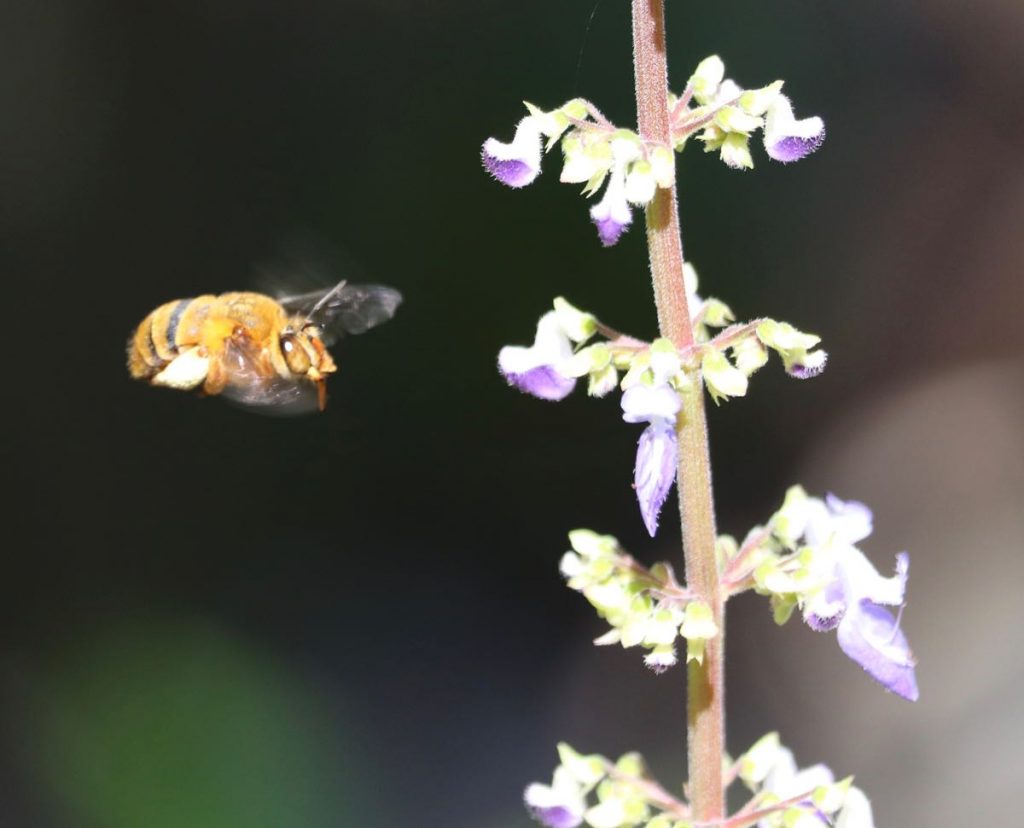
Another regular garden visitor is the Great Carpenter Bee. At first I thought this was a bumble bee, but apparently Australia has no native bumble bees. This is the largest Australian bee growing from 15 to 24 mm. They cut nest burrows in soft timber such as the dead limbs of mango trees. I wonder where my visitors are living…..?
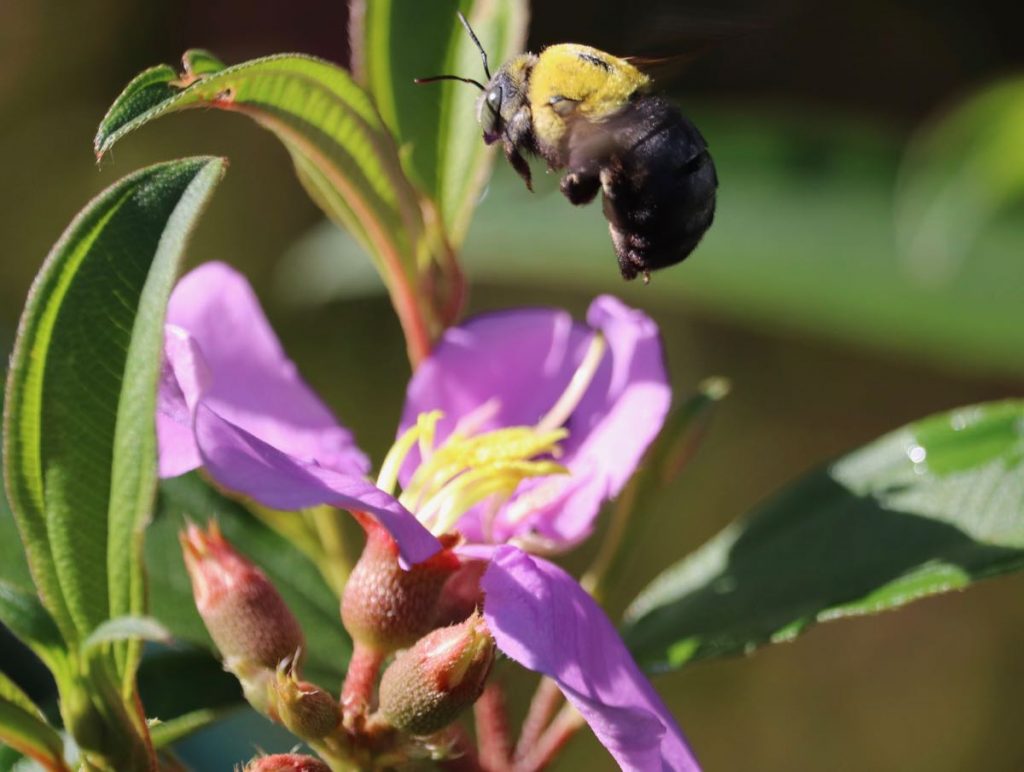
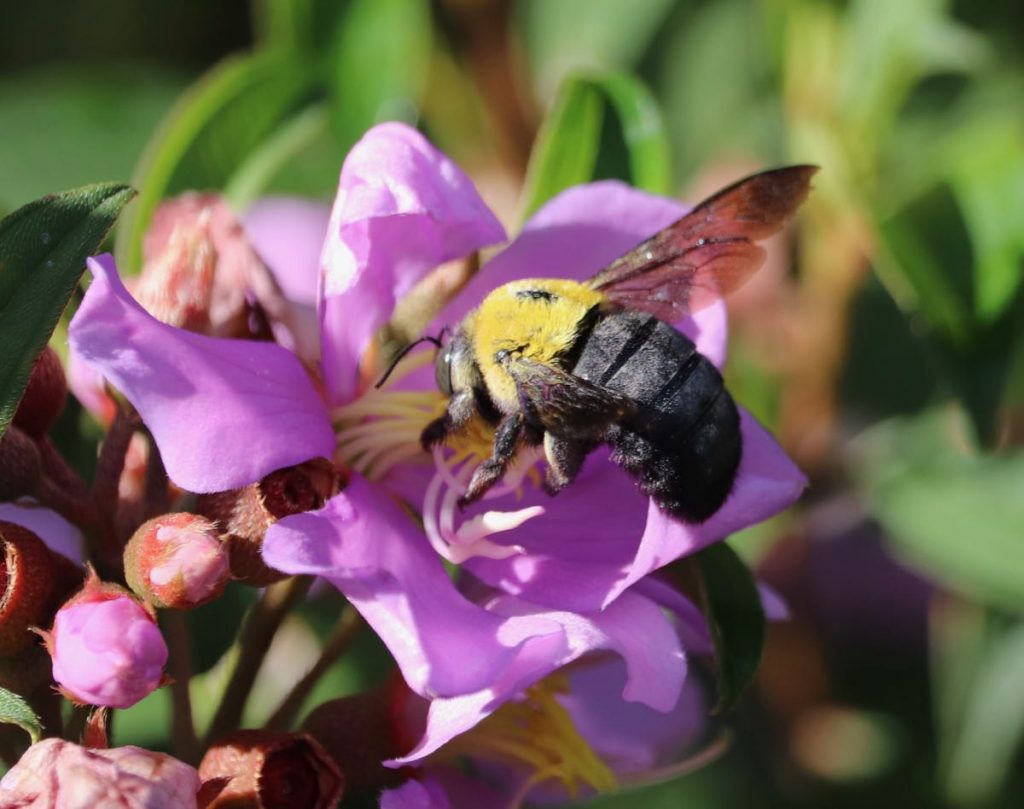
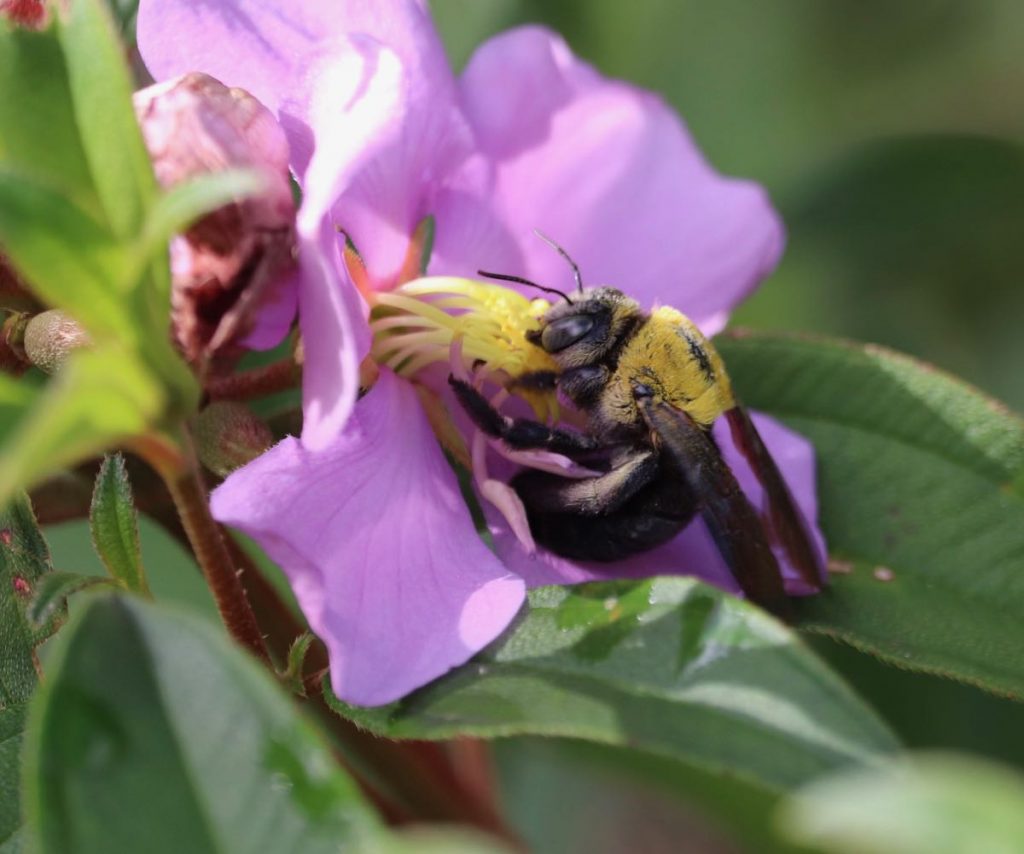
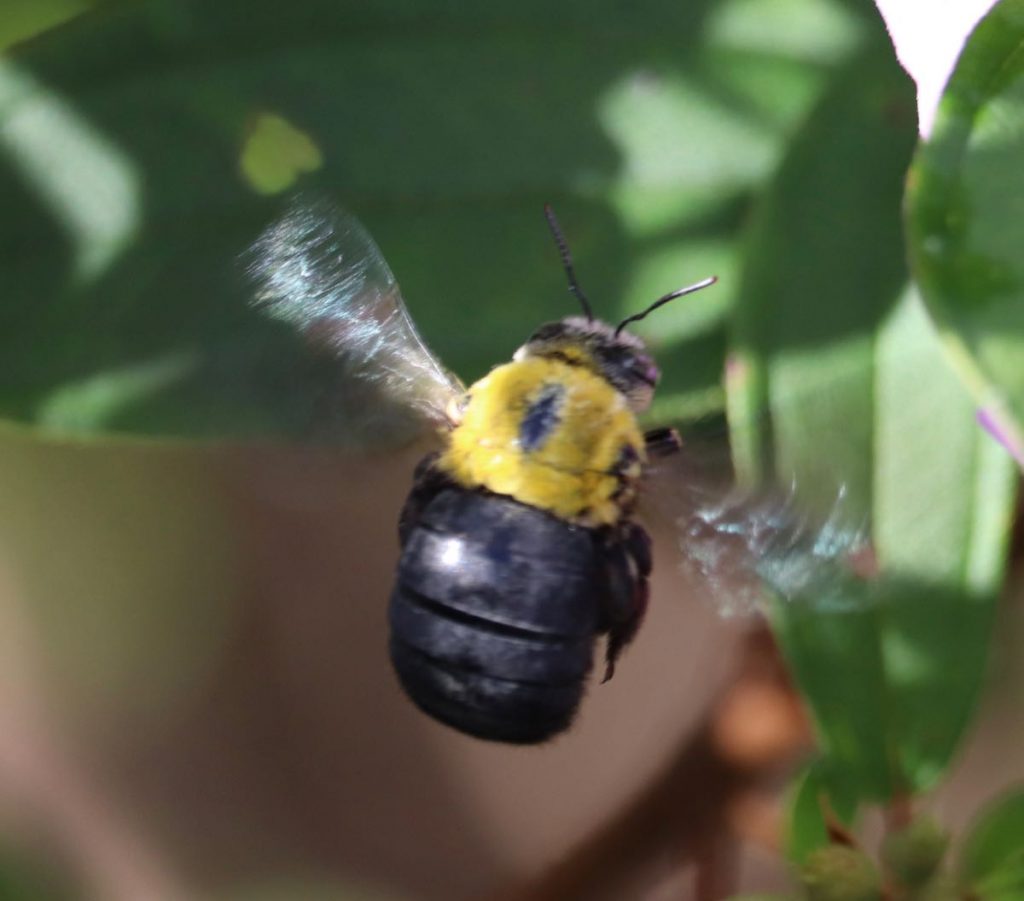
I have also seen the Blue-Banded Bee in my garden, about the size of a honey bee, and evidenced the possible presence of one of the 150 described species of Leafcutter Bees.
I am not an expert on bees – just an interested spectator, but if you have any questions I might know the answer, or know where to look.
Happy gardening and remember ‘Plant for the Pollinators.’
Text & Photos by Jennie Robinson

Great article Jennie, and fantastic photos! I am no bee expert either but have always been fascinated by the diversity of native bees. Another one that can occasionally be seen in Paluma gardens is the neon cuckoo bee. Like its avian namesake, this bee deposits its eggs in the burrows of other native bees thus relieving ist self of the need to add provisions for the developing larvae.
Here is a photo from my garden a few years ago.
https://paluma.org/wp-content/uploads/photo-gallery/neon_cuckoo-bee.jpg
Great photo Jamie. Must keep an eye out – what a beauty! What lens and camera did you use? Jennie
Hi Jennie,
I took this with an Olympus E3 and Zuiko 50mm macro lens. I since upgraded to a mirrorless OMD E-M1 but still use my old (and still great) full size Zuiko lenses.
Despite their beautiful colour they were very inconspicuous and I had been working in the front garden verge for 30 minutes or so early one morning before I realised that the dead flower heads on several old weed stalks around me were actually bees. The bee was easy to shoot since it goes into a mini-hibernation overnight and only is capable of moving or flying once it warms up in the sun the next morning. It is attached to the old weed stem by its jaws, which are frozen shut. I’m much more impressed with your skilful capture of the carpenter bee in mid flight!